10 Essential Features of Building Maintenance Tracking Software
10 Essential Features of Building Maintenance Tracking Software
Overview
Building maintenance tracking software encompasses several key features, including:
- Work order management
- Preventive maintenance scheduling
- Advanced reporting tools
- System integrations
- Wireless sensors
- A user-friendly interface
- Mobile access
- Compliance tracking
- Robust customer support
Each of these features plays a crucial role in enhancing operational efficiency. For instance, work order management streamlines task allocation, while preventive maintenance scheduling helps organizations avoid costly repairs.
The advantages of these features are significant. Advanced reporting tools provide insights that aid in decision-making, and system integrations ensure that various platforms work seamlessly together. Wireless sensors contribute to real-time monitoring, enhancing proactive maintenance strategies. Together, these capabilities lead to improved task management and ultimately foster a culture of proactive maintenance.
The benefits of implementing such software are profound. Organizations can expect not only cost savings but also an elevated level of service delivery. By investing in building maintenance tracking software, companies position themselves to operate more efficiently, respond to issues more swiftly, and maintain compliance with industry standards. How can your organization leverage these features to enhance its operational capabilities?
Introduction
Building maintenance tracking software has become an essential tool for organizations seeking to enhance operational efficiency and reduce costs. This software offers advanced features, including comprehensive data access, work order management, and real-time monitoring, which enable businesses to streamline their maintenance processes and ensure the longevity of their assets.
However, as the landscape of maintenance management evolves, one critical question arises: what features can truly transform maintenance tracking into a proactive and effective strategy? By exploring these ten essential features, organizations can uncover not only opportunities for improvement but also the challenges they must navigate to achieve optimal results.
Initial Data Offering: Comprehensive Dataset Access for Maintenance Tracking
Initial Data Offering (IDO) serves as a vital resource for upkeep tracking software, offering access to a variety of datasets that significantly enhance operational efficiency. These datasets encompass building performance, equipment lifespan, and service history, empowering service teams to make informed decisions. For instance, practical applications of building performance data have shown that organizations can identify trends in equipment failures, which facilitates proactive scheduling of maintenance and resource allocation.
As we approach 2025, the importance of data access for upkeep tracking is paramount. Comprehensive datasets allow teams to analyze trends effectively, leading to optimized strategies that not only reduce costs but also enhance service delivery. The integration of advanced analytics into operational tasks is linked to increased productivity, enabling teams to respond swiftly to anomalies and emergencies.
Industry leaders emphasize the necessity of leveraging datasets for operational efficiency in upkeep. By harnessing comprehensive datasets, organizations can streamline workflows, improve interdepartmental coordination, and ultimately achieve superior outcomes. This data-driven approach cultivates a culture of continuous improvement and positions companies to adapt to changing market demands and technological advancements. How can your organization utilize these insights to enhance its operational strategies?
![]()
Work Order Management: Streamline Task Organization and Tracking
Work order management serves as a fundamental feature of upkeep tracking software, allowing users to create, assign, and effectively monitor tasks. This capability ensures that work orders are organized based on priority and deadlines, which helps teams guarantee timely completion of repair activities. The advantages of this feature extend beyond mere task management; it enhances accountability while providing a transparent overview of ongoing tasks. Consequently, this clarity enables better resource allocation and management, ultimately leading to more efficient operations.
How could your team benefit from improved work order management?
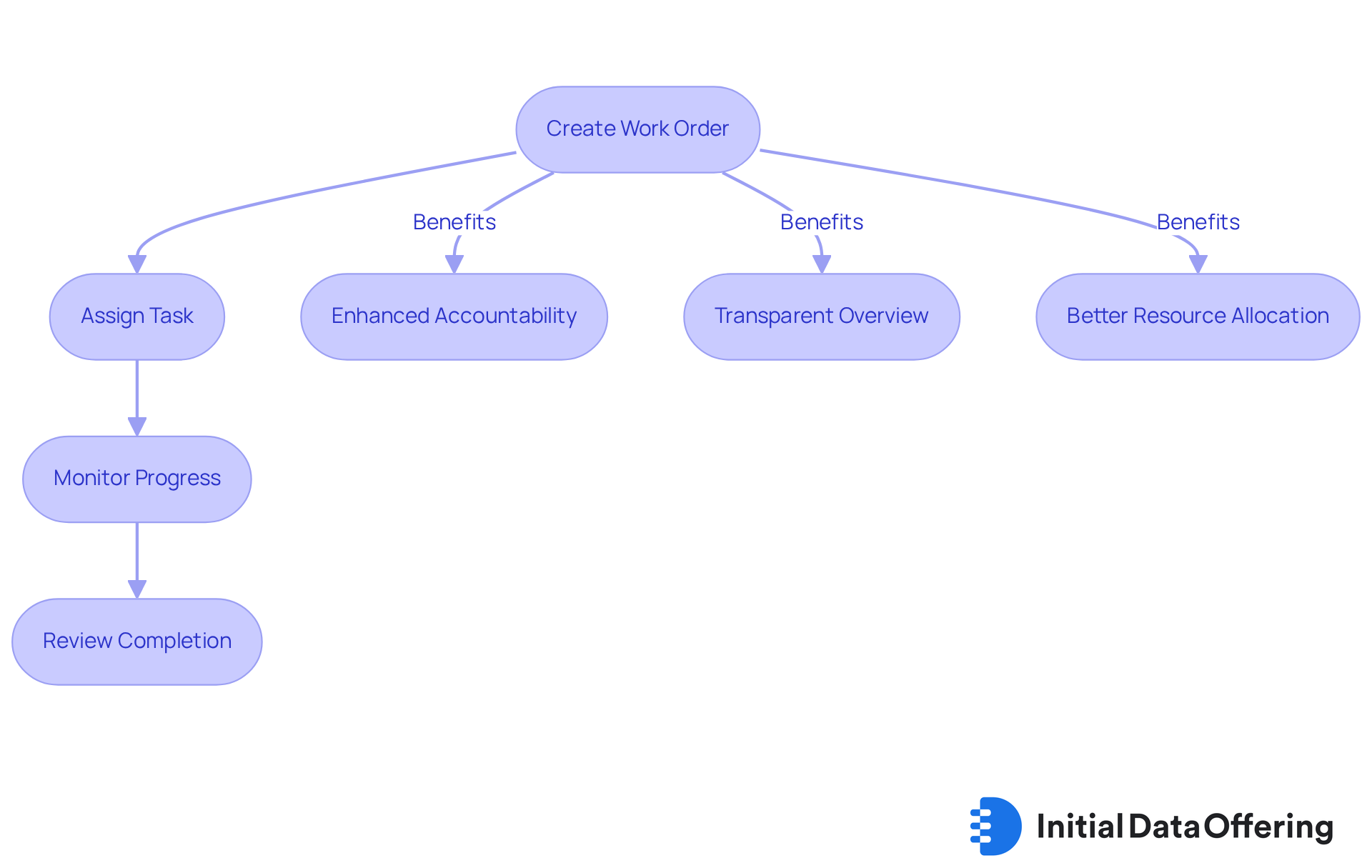
Preventive Maintenance Scheduling: Enhance Longevity and Performance
Preventive upkeep scheduling is essential for ensuring that equipment and facilities receive regular servicing, which helps to prevent unexpected failures. By implementing building maintenance tracking software, companies can set up automated alerts for routine inspections and servicing. This proactive strategy not only extends the lifespan of assets but also enhances overall performance. As a result, organizations can achieve significant cost savings over time.
Have you considered how preventive upkeep can impact your operations? By prioritizing maintenance, businesses can avoid costly downtime and improve efficiency. The integration of automated alerts in building maintenance tracking software streamlines the process, making it easier to track necessary servicing. Ultimately, this approach fosters a culture of reliability and sustainability in asset management.
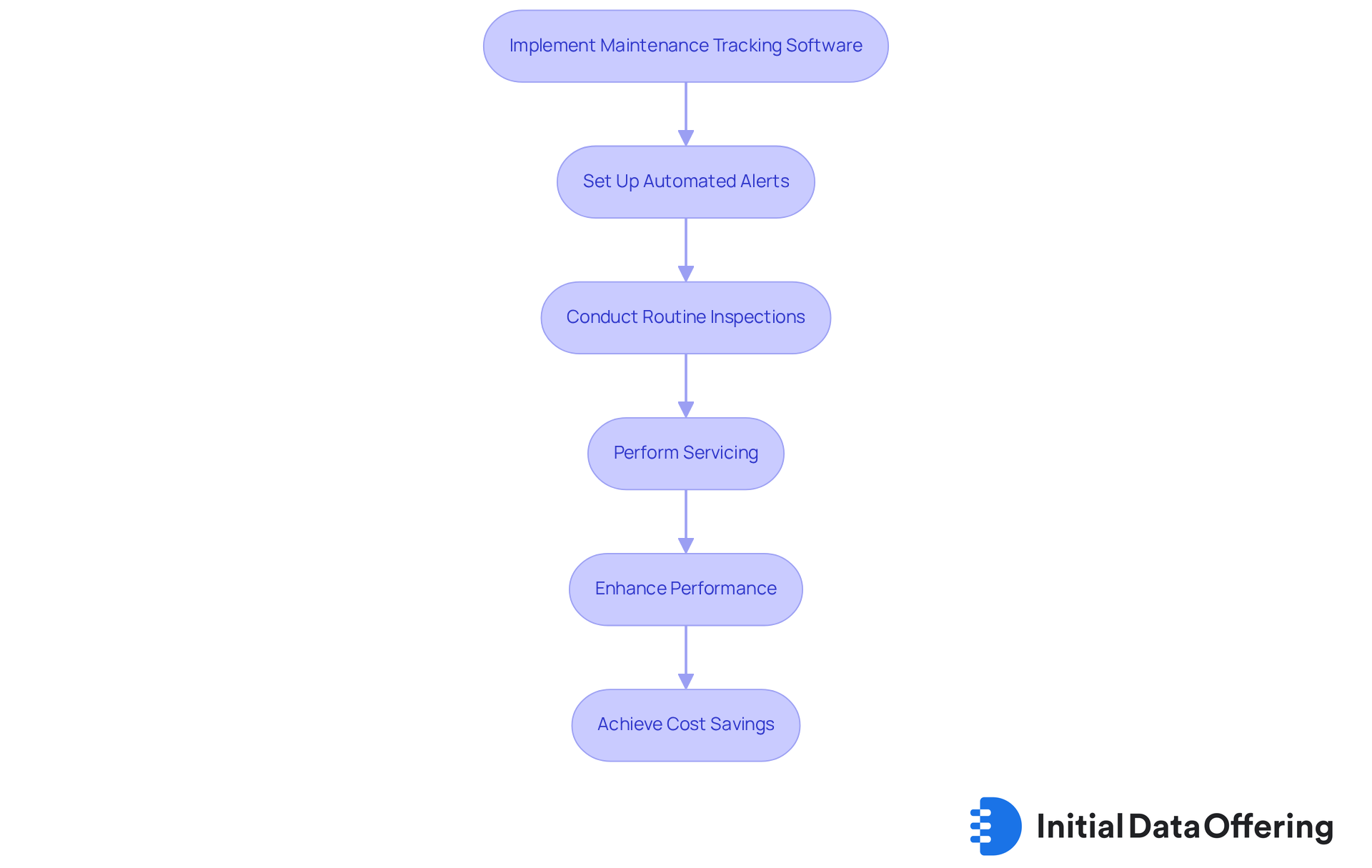
Advanced Reporting Tools: Analyze Maintenance Performance and Trends
Advanced reporting tools in tracking software empower organizations to analyze performance metrics and identify trends over time. Building maintenance tracking software produces detailed reports on upkeep activities, costs, and equipment performance, enabling data-informed decision-making that improves upkeep strategies.
For instance, businesses employing predictive upkeep can reduce expenses by as much as 25% and enhance uptime by 10 to 20% by preventing emergency repairs and prolonging equipment lifespan. This capability allows teams to pinpoint areas for improvement, optimize resource allocation, and ultimately reduce unplanned downtime, which can cost manufacturers an average of $260,000 per hour.
Furthermore, 60% of upkeep specialists believe that access to dependable, precise information is essential for effectively executing predictive upkeep. As Brandon Haight observed, the rapid expansion of predictive upkeep indicates its rising acceptance among companies aiming to enhance efficiency and reduce expenses.
By utilizing these insights, organizations can significantly enhance their upkeep performance and operational efficiency. However, it is crucial to recognize that 60-80% of CMMS implementations fail due to poor user engagement and training, underscoring the need for a strategic approach to adopting these advanced tools.
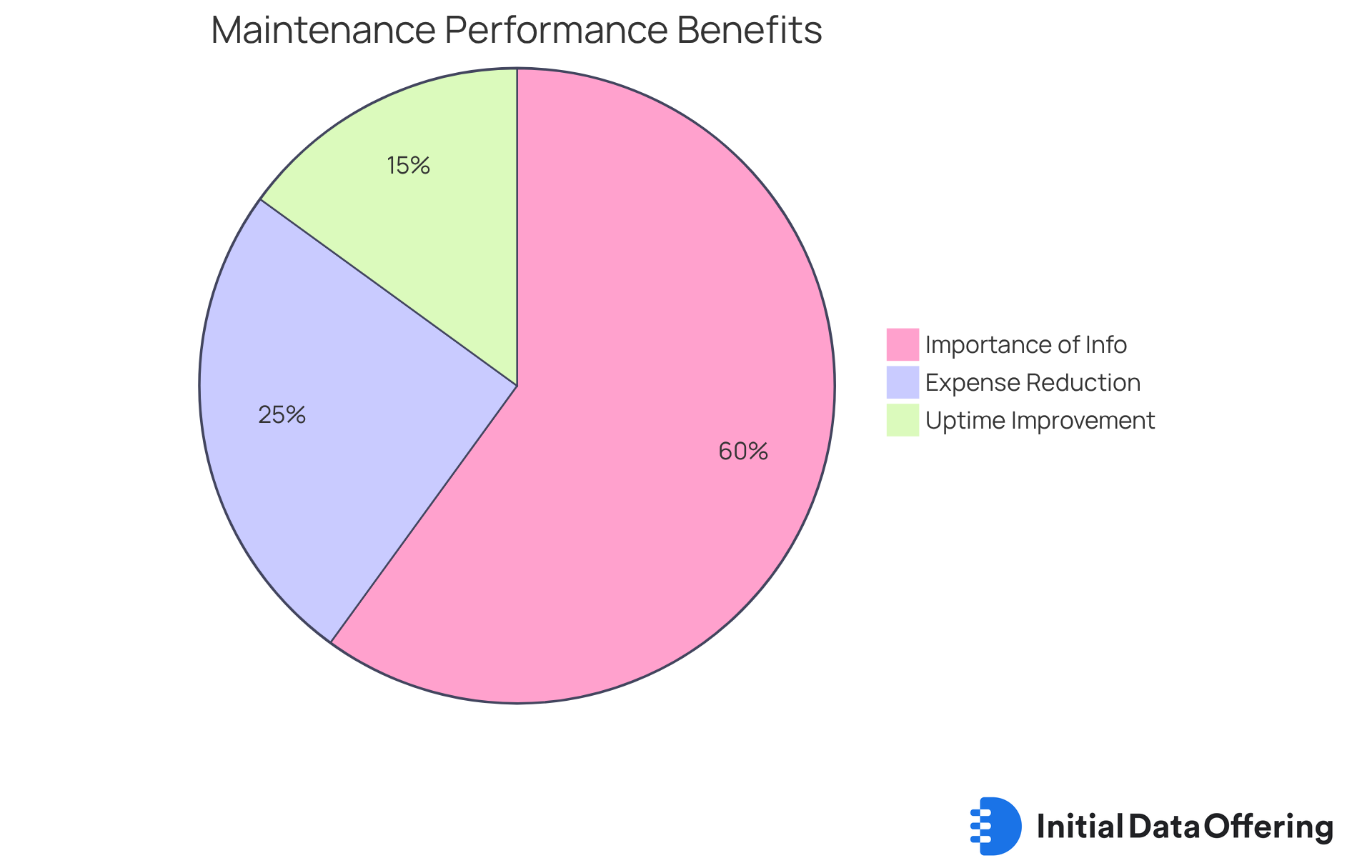
System Integrations: Connect with Existing Tools for Enhanced Functionality
System integrations serve as a foundation for efficient tracking solutions, enabling seamless connections with existing tools such as inventory management systems, financial applications, and project management platforms. This interoperability enhances functionality while ensuring that all relevant data is centralized, which streamlines workflows and boosts overall efficiency.
For instance, organizations that effectively merge their maintenance software with additional applications report a remarkable 59% improvement in close rates. This statistic showcases the tangible advantages of enhanced data accessibility. Furthermore, experts emphasize that efficient integrations can significantly reduce the time required to implement new features; in fact, 71% of organizations note that it typically takes at least three weeks to launch a single integration to market.
Real-world examples, such as KDDI's standardization of monitoring tasks using Zabbix, demonstrate how integrating various systems can lead to improved operational efficiency and better resource management. As Mike McCaffree pointed out, interoperability should be viewed as a flexible framework that allows diverse entities to collaborate effectively.
By prioritizing interoperability, building maintenance tracking software can transform how organizations manage their operations, leading to more informed decision-making and enhanced productivity.
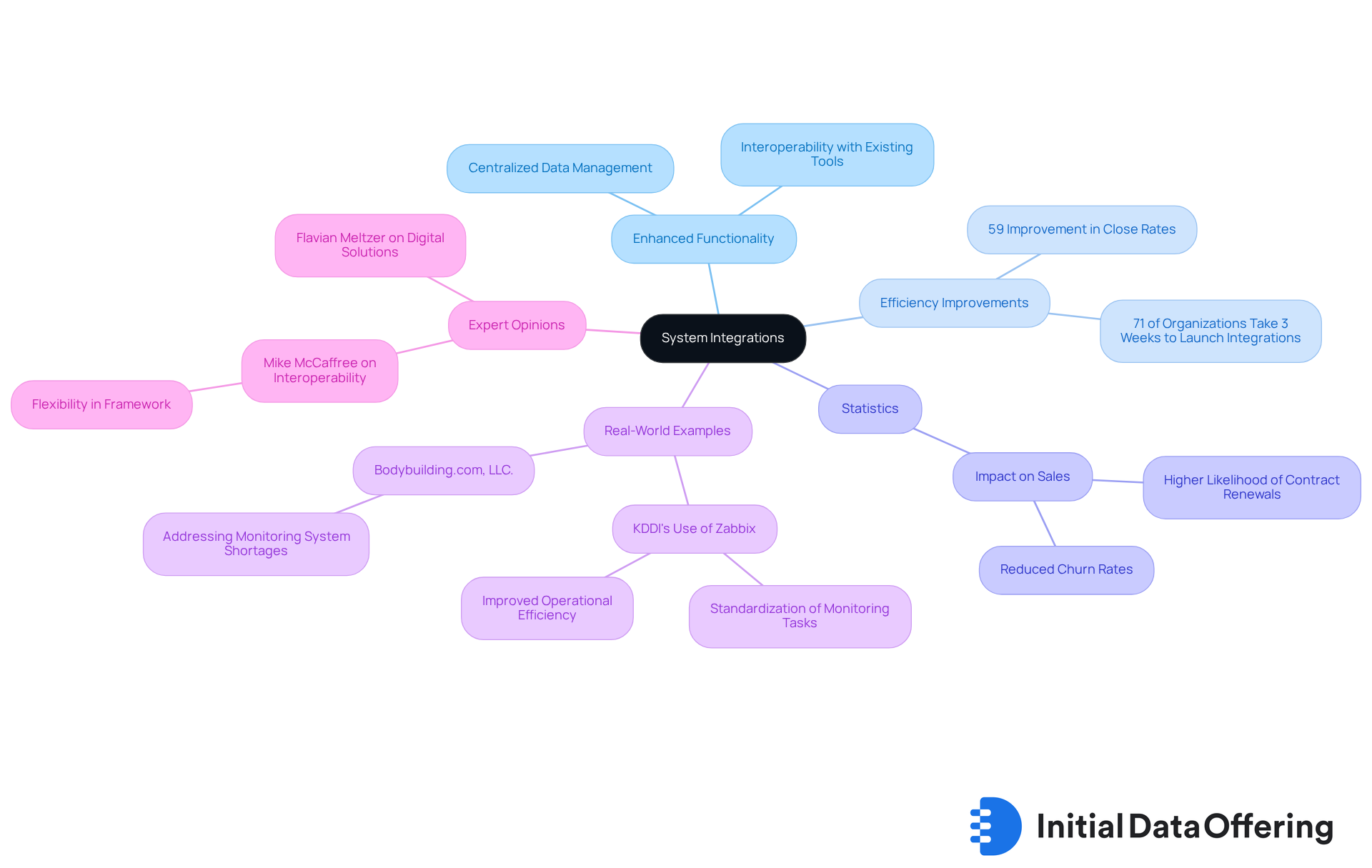
Wireless Sensors: Real-Time Monitoring for Proactive Maintenance
Wireless sensors are revolutionizing tracking by enabling real-time observation of equipment and environmental conditions. These advanced sensors feature the capability to detect anomalies, such as temperature variations or unusual vibrations. This advantage allows support teams to intervene before minor issues develop into expensive failures. For example, entities that have adopted wireless sensors indicate considerable decreases in upkeep expenses, as proactive actions avert unforeseen failures.
Innovations in this field include the use of IoT-enabled sensors that provide continuous data streams. This facilitates immediate responses to potential problems, enhancing operational reliability. As observed by industry leaders, the incorporation of building maintenance tracking software into upkeep strategies promotes a culture of continuous improvement. This proactive strategy is crucial for entities seeking to enhance their upkeep processes through building maintenance tracking software and minimize downtime. Ultimately, this results in greater productivity and cost-effectiveness.
How might your organization leverage these advancements to improve maintenance practices?
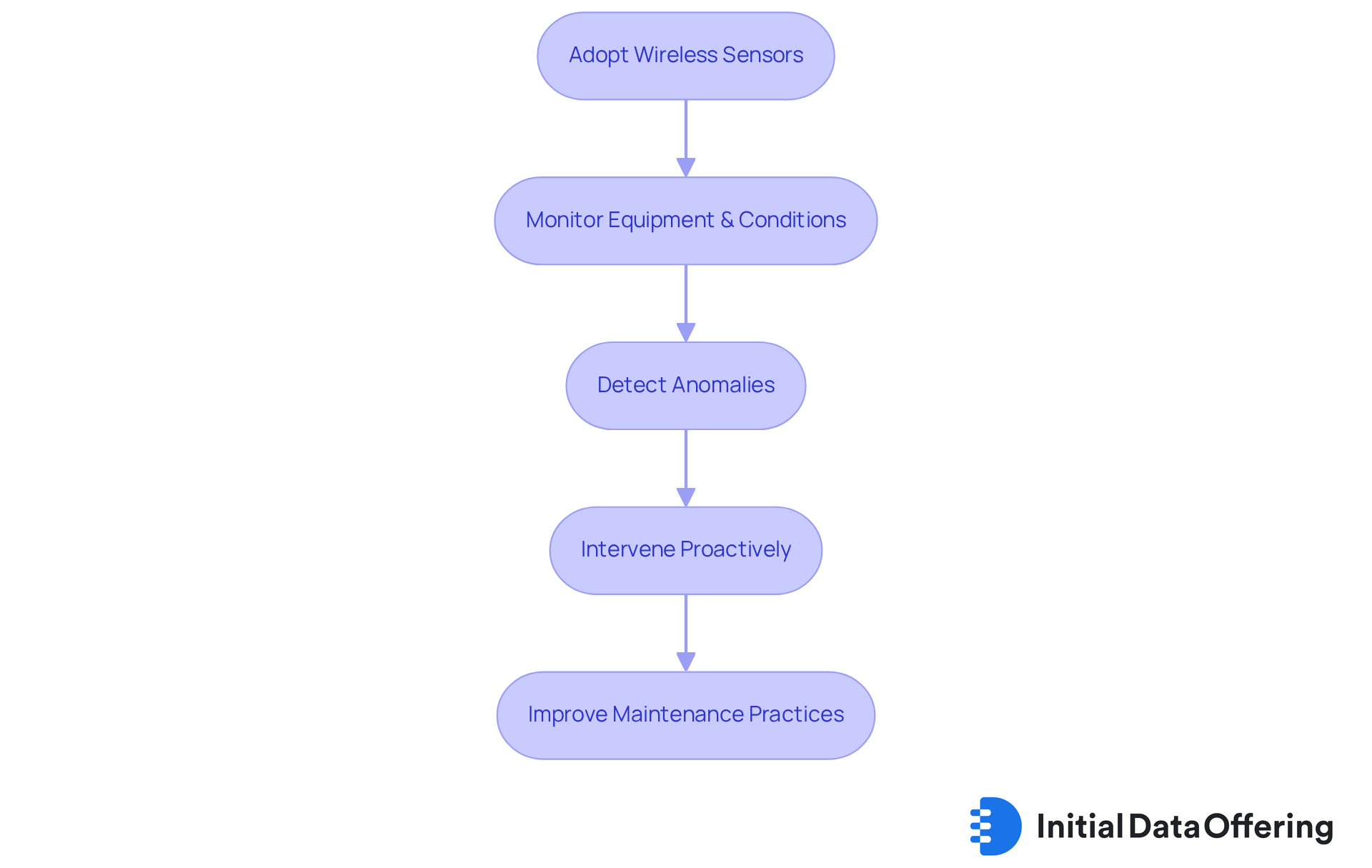
User-Friendly Interface: Simplify Navigation and Task Management
An easy-to-use interface is a crucial feature of tracking tools, streamlining navigation and task management for users. This intuitive design allows team members to quickly access necessary information, thereby reducing the learning curve and enhancing overall productivity. By prioritizing usability, organizations ensure that all employees can effectively interact with the system, leading to improved upkeep results. As Jackson Stone, Product Marketing Manager, points out, 'Selecting a loan management system is more than a tech decision—it's a foundational choice for your future growth.' This statement underscores the essential role of user-friendly design in software selection.
Current trends in interface design, such as the integration of artificial intelligence (AI) for personalized experiences and voice user interfaces (VUIs), further illustrate the evolving landscape of tracking tools. Practical examples, such as the enhancements seen in LoanPro's interface, demonstrate that organizations embracing these principles have achieved significant productivity gains, enabling employees to perform upkeep tasks more efficiently and with greater accuracy. By focusing on user-centered design and conducting thorough user testing, tracking tools can markedly enhance operational effectiveness and user satisfaction.
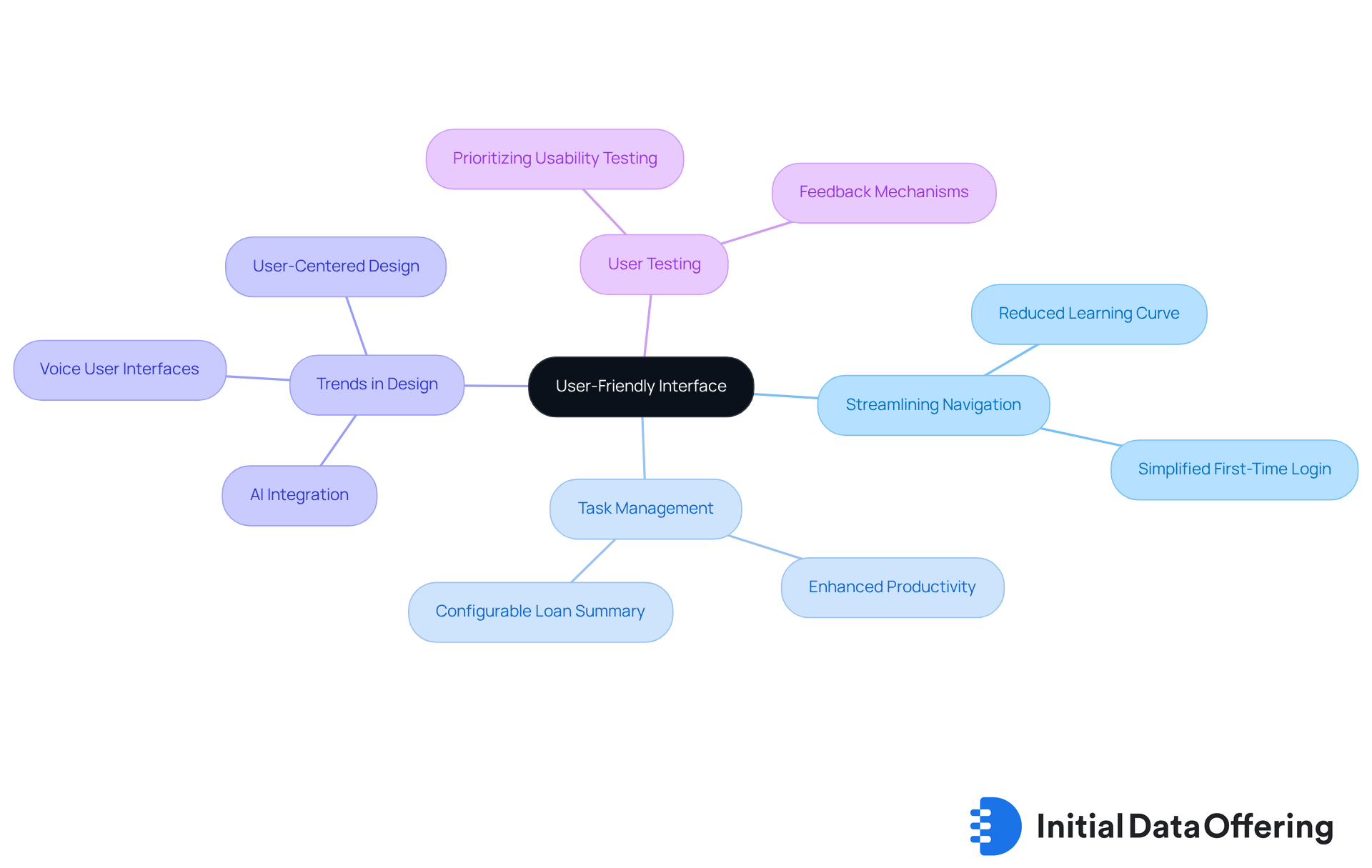
Mobile Access: Manage Maintenance Tasks Anytime, Anywhere
Mobile access to upkeep tracking software serves as a pivotal feature that empowers teams to manage tasks anytime and anywhere. This flexibility significantly enhances responsiveness in operations. For field technicians, the ability to receive real-time updates, record service activities, and access essential information directly from mobile devices is a considerable advantage. Not only does this capability simplify communication among team members, but it also ensures that upkeep tasks are carried out efficiently, regardless of location.
Consider the impact of technicians equipped with mobile tools. They can enter notes, take photographs, and complete work orders on-site, which eliminates the need for manual paperwork and reduces delays in task completion. This transition to mobile upkeep systems decreases reliance on paper-based forms and manual data entry, resulting in enhanced operational efficiency and greater task completion rates. Field service managers have observed that mobile solutions foster better communication, enabling teams to respond swiftly to service needs and maintain accountability in operations.
Furthermore, mobile access facilitates nearly instant receipt of work orders by service employees, thereby enhancing responsiveness. How might your organization benefit from such technology? By utilizing mobile technology, companies can improve their task management for upkeep, ultimately leading to better results and increased customer satisfaction. This shift not only streamlines processes but also positions organizations to meet evolving service demands effectively.
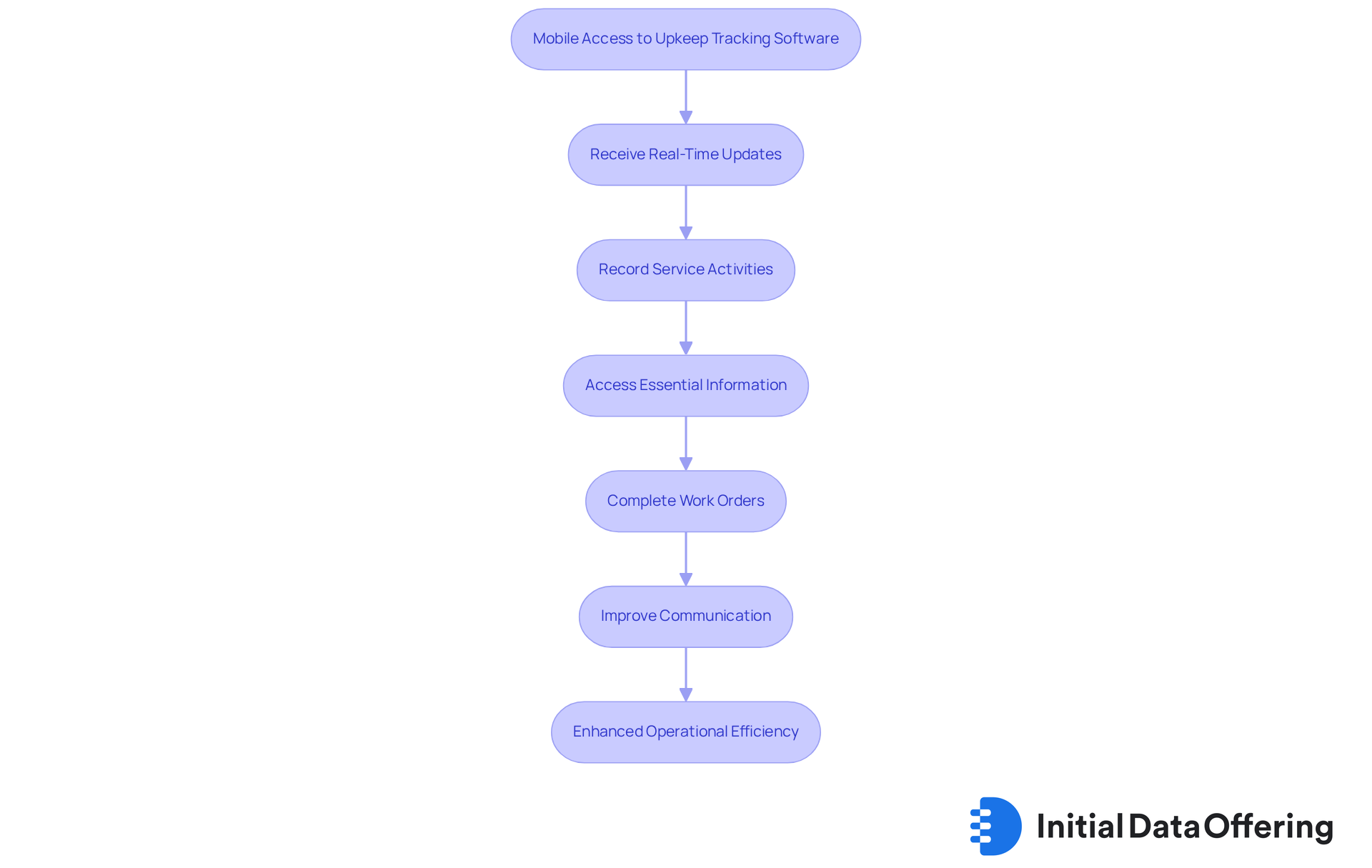
Compliance Tracking: Ensure Adherence to Safety and Regulatory Standards
Compliance monitoring functionalities in building maintenance tracking software play a vital role for entities aiming to uphold safety and regulatory standards. By using building maintenance tracking software to automate compliance checks and meticulously document maintenance activities, companies can significantly mitigate the risks associated with non-compliance. This proactive approach not only safeguards against potential penalties but also cultivates a culture of safety and accountability within the organization.
For example, 97% of individuals utilizing compliance monitoring software reported enhanced security and compliance postures. Additionally, 89% of participants experienced accelerated time-to-compliance across multiple frameworks, showcasing the effectiveness of these tools in bolstering operational integrity. Organizations that utilize building maintenance tracking software for automated compliance checks can anticipate a marked improvement in adherence to safety standards. A case study demonstrated that regular monitoring of insurance policies helped avoid lapses in coverage, ensuring continuous protection.
Moreover, the case study on expedited compliance highlights that 89% of Secureframe participants noted a quicker time-to-compliance for various frameworks. By leveraging technology to streamline compliance processes, businesses can navigate the complexities of regulatory requirements more efficiently. This ultimately leads to improved safety outcomes and reduced operational risks.
How can your organization harness these insights to enhance compliance and safety?
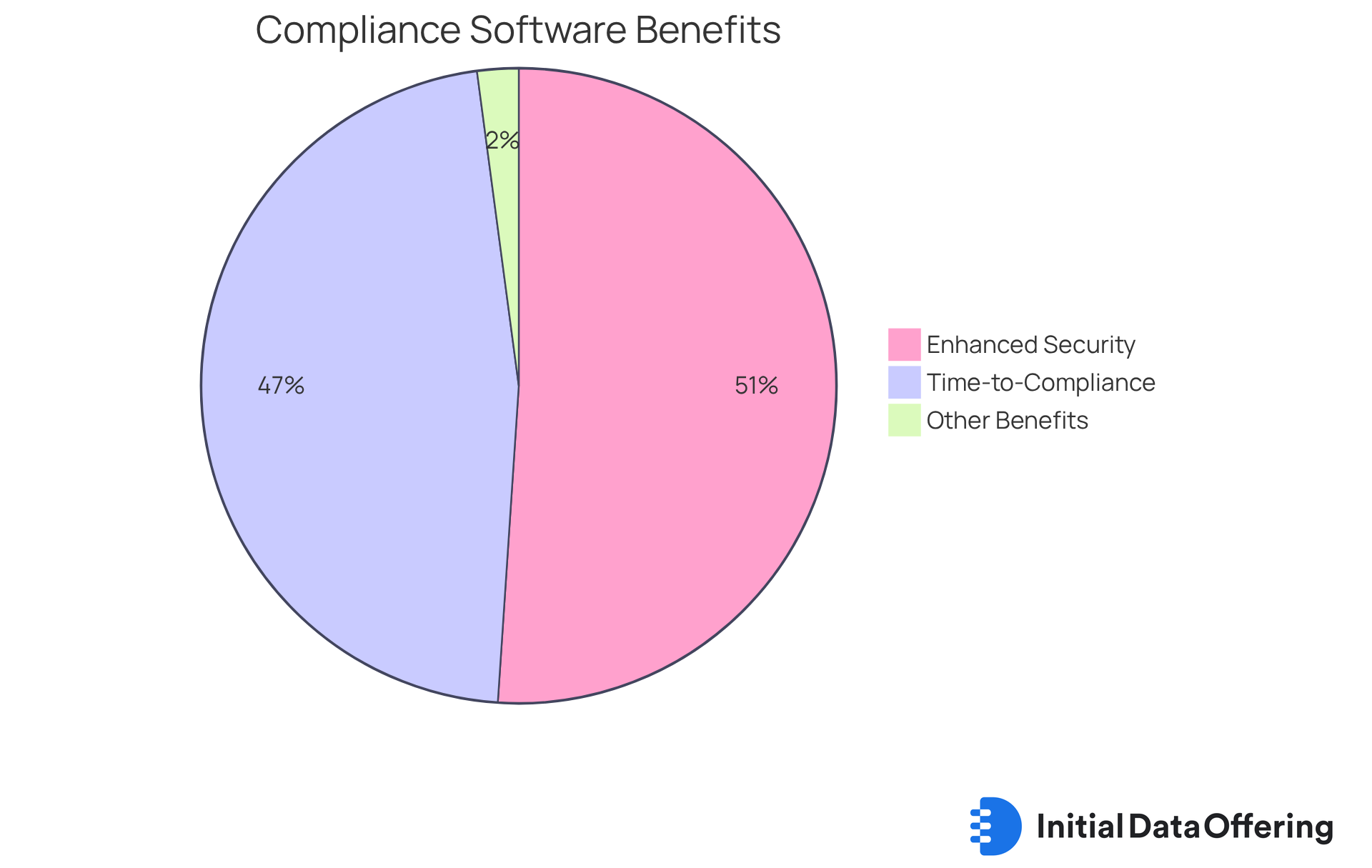
Robust Customer Support: Maximize Software Utilization and Effectiveness
Strong customer assistance serves as a crucial feature for enhancing the efficiency of building maintenance tracking software, which directly impacts client satisfaction. The advantage of having access to knowledgeable support staff enables individuals to troubleshoot issues, learn best practices, and navigate advanced features effectively. Studies reveal that 89% of buyers are more inclined to make repeat purchases following a positive customer service interaction. This highlights the benefit of prioritizing assistance in application use. Furthermore, with over 1.7 million reviews enabled for businesses and a 4.9 Google review rating, the impact of effective customer support is evident.
Organizations that invest in comprehensive customer support not only enhance client satisfaction but also ensure that their building maintenance tracking software efforts yield optimal results. Effective onboarding procedures and ongoing education initiatives are essential, as many individuals decide whether to continue using a software product within the first 30 days. By cultivating a proactive support strategy, companies can foresee client needs and tackle challenges before they escalate, resulting in enhanced retention and loyalty. Maintaining a customer churn rate below 5% is essential for good satisfaction levels, underscoring the importance of customer success teams in onboarding and ongoing support.
Industry leaders emphasize the importance of treating customers with respect and understanding their unique needs. As Harry Gordon Selfridge noted, 'Get the confidence of the public and you will have no difficulty in getting their patronage.' This sentiment reflects the core principle that exceptional customer service is foundational to building lasting relationships.
Integrating the latest trends in customer support, such as personalized interactions and data-driven insights, can significantly improve the experience for clients. For instance, companies like Slack have successfully implemented interactive onboarding tours that guide new users, reducing friction and accelerating feature adoption rates. By leveraging these strategies, organizations can maximize the utilization of their building maintenance tracking software, ultimately driving better outcomes and fostering a culture of continuous improvement.
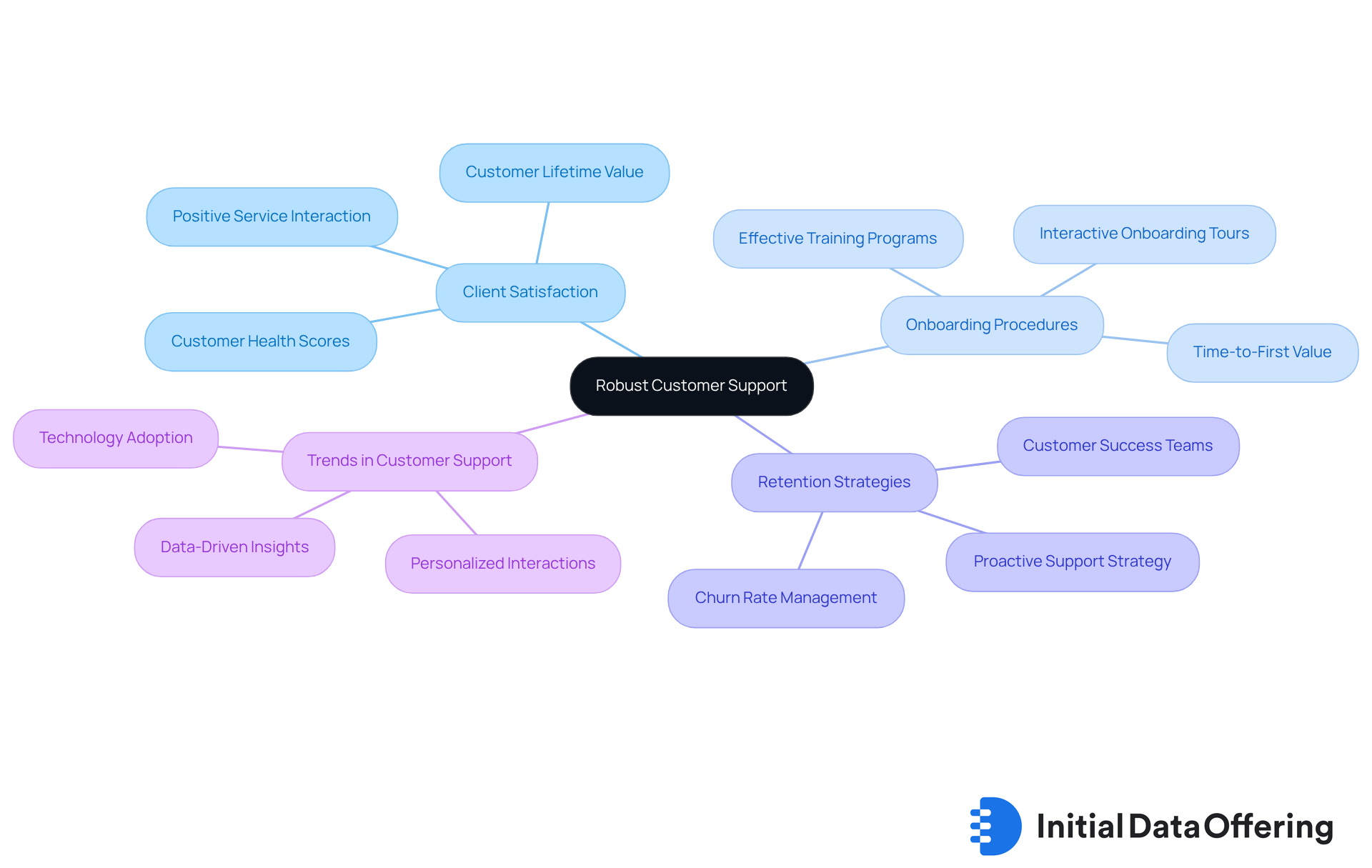
Conclusion
Building maintenance tracking software is essential for optimizing operational efficiency and ensuring effective management of maintenance tasks. By incorporating features such as:
- Comprehensive data access
- Work order management
- Preventive maintenance scheduling
- Advanced reporting tools
organizations can significantly enhance their maintenance strategies. These tools streamline operations and promote a proactive approach to maintenance, ultimately leading to improved performance and reduced costs.
Key arguments throughout the discussion highlight the importance of leveraging data for informed decision-making. The role of user-friendly interfaces enhances productivity, while the necessity of mobile access facilitates real-time task management. Furthermore, the integration of system functionalities and robust customer support are critical components that foster a culture of continuous improvement and operational excellence.
As organizations navigate the complexities of maintenance management, embracing these essential features will be pivotal in achieving long-term success. Investing in building maintenance tracking software not only enhances compliance and safety standards but also positions companies to adapt to evolving market demands. These insights serve as a call to action for businesses to evaluate their current maintenance practices and consider the transformative potential of advanced tracking solutions.
Frequently Asked Questions
What is the Initial Data Offering (IDO) and its significance?
The Initial Data Offering (IDO) provides access to various datasets essential for maintenance tracking software. It enhances operational efficiency by offering insights into building performance, equipment lifespan, and service history, enabling service teams to make informed decisions and proactively schedule maintenance.
How do comprehensive datasets impact operational strategies in maintenance tracking?
Comprehensive datasets allow teams to analyze trends effectively, leading to optimized strategies that reduce costs and enhance service delivery. The integration of advanced analytics improves productivity and enables teams to respond swiftly to anomalies and emergencies.
What role does work order management play in upkeep tracking software?
Work order management is a key feature that allows users to create, assign, and monitor tasks. It organizes work orders by priority and deadlines, ensuring timely completion of repair activities, enhancing accountability, and providing a transparent overview of ongoing tasks for better resource allocation.
How does preventive maintenance scheduling benefit organizations?
Preventive maintenance scheduling ensures regular servicing of equipment and facilities, helping to prevent unexpected failures. It allows companies to set up automated alerts for routine inspections, extending the lifespan of assets and enhancing overall performance, which leads to significant cost savings over time.
What advantages does integrating automated alerts in maintenance tracking software provide?
Integrating automated alerts streamlines the maintenance process by making it easier to track necessary servicing. This proactive approach fosters a culture of reliability and sustainability in asset management, helping organizations avoid costly downtime and improve efficiency.